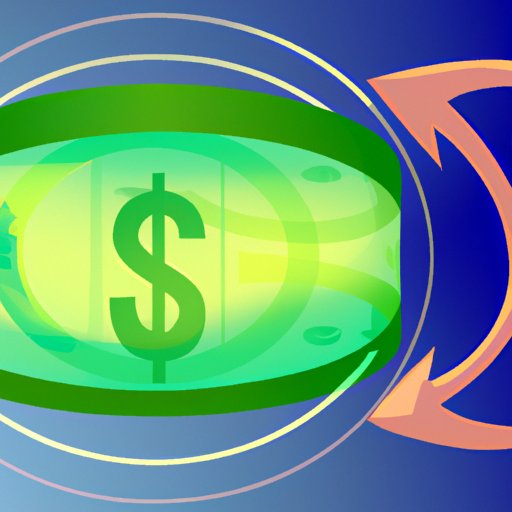
I. Introduction
Money is an integral part of our daily lives. We use it to make transactions, save for the future, and invest in our financial goals. Despite our dependence on it, many of us do not fully understand how money is created. This lack of understanding can lead to confusion and mistrust in the financial system. Therefore, this article seeks to demystify the process of money creation and provide readers with the information they need to fully grasp the workings of the financial system.
II. Historical Overview
Money has evolved over time in different civilizations. From bartering and trading, to the use of precious metals and coins, and later banknotes and credit cards, the concept of money has changed immensely. Today, central banks play a critical role in creating money. They do this by setting interest rates and controlling the money supply through various monetary policy tools.
III. Fractional Reserve Banking
Fractional Reserve Banking is the process by which banks create money. Banks keep only a fraction of the deposits they receive on reserve and lend out the rest. This process creates new money because the borrower spends the loan, and it goes on to become a deposit in another bank, which can then lend out more money. This process continues until the initial deposit and the loans have created several times the initial amount of money deposited.
For example, if a bank has a reserve requirement of 10% and a person deposits $1,000 into their account, the bank must keep $100 on reserve and can lend out the remaining $900. If that money is then deposited into another bank, that bank can also lend out 90% of it ($810), and so on.
IV. The Role of Central Banks
Central banks have a significant role to play in the creation of money. They do this by setting interest rates and controlling the money supply. Central banks influence the money creation process through various tools of monetary policy, such as open market operations and reserve requirements.
For example, if the central bank decreases interest rates, banks are likely to lend out more, resulting in an increase in the money supply. Conversely, if the central bank increases interest rates, banks are less likely to lend, leading to a decrease in the money supply.
V. The Money Multiplier Effect
The money multiplier effect refers to the phenomenon where a small change in the central bank’s policy can create a much larger change in the money supply. This occurs because as a bank lends out money, it creates deposits in other banks, which in turn lend out more money, creating more deposits, and so on. The money multiplier effect can have significant implications for the economy, as changes in the money supply can affect inflation, employment, and economic growth.
VI. Government’s Influence
The government also plays a role in the money creation process. Government spending, taxation, and borrowing all have an impact on the amount of money in circulation. If the government spends more money than it collects from taxes, it creates a budget deficit, resulting in an increase in the money supply. Conversely, if the government collects more money in taxation than it spends, it creates a budget surplus, leading to a decrease in the money supply.
VII. Conclusion
Understanding how money is created is crucial in improving our financial well-being. By knowing the factors that influence the money supply, such as fractional reserve banking, central bank policy, and government spending, taxation, and borrowing, we can make informed decisions about our financial lives. By demystifying the process of money creation, this article strives to empower readers to take control of their finances.





